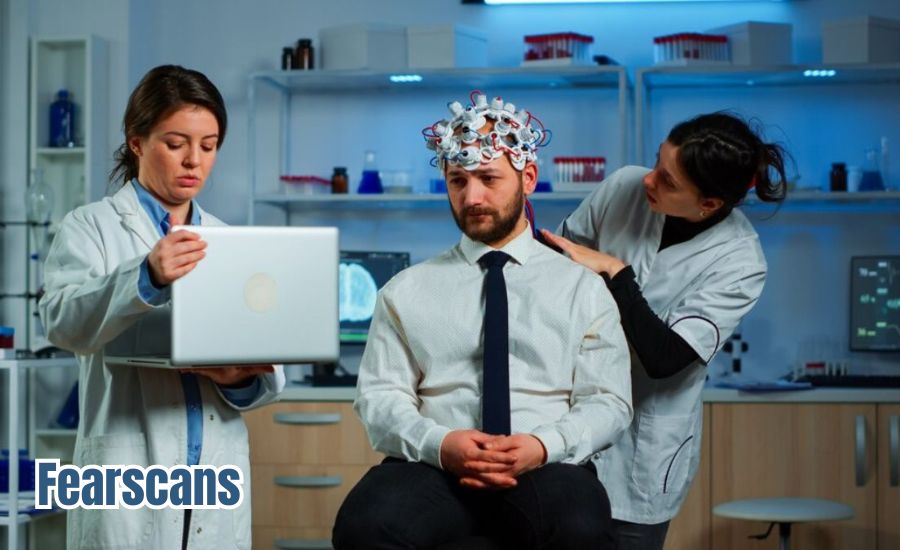Fearscans: A New Dawn in Mental Health Diagnosis

In our modern society, mental health awareness has become increasingly vital. Understanding our mental well-being is crucial as we navigate daily stressors and challenges. This is where fearscans come into play. Fearscans represent a breakthrough in diagnosing mental health conditions, using advanced technology to analyze our emotional states. At USA MAGZENE, we recognize the importance of staying informed about emerging tools that can aid mental health diagnosis. This article will explore what fearscans are, how they work, their benefits, potential challenges, and their future in mental health care.
The Evolution of Mental Health Diagnosis
From Subjective Assessments to Objective Measurements
For years, mental health diagnosis has relied heavily on subjective assessments. Clinicians have often depended on patients’ self-reports, which can be influenced by mood, understanding, and communication skills. This subjectivity can lead to misunderstandings and misdiagnoses, making accurate treatment difficult.
Fearscans introduce a refreshing change by providing objective measurements of emotional responses. Using technology to analyze physiological indicators like heart rate variability and facial expressions, fear scans help create a clearer picture of a patient’s mental state. This evolution in mental health diagnosis is crucial, as it allows healthcare professionals to identify issues that traditional methods may overlook.
The Role of Technology in Modern Diagnostics
As we advance technologically, our approach to mental health has also evolved. Telehealth services have made it easier for individuals to access mental health care. Yet, these services often lack the precision needed for accurate diagnoses.
Fearscans bridges this gap by employing sophisticated equipment that captures real-time data about emotional responses. This technology enhances the diagnostic process and allows for better understanding and management of mental health issues. As we embrace these advancements, we pave the way for a more informed approach to mental well-being.
How Fearscans Work

The Technology Behind Fearscans
Fearscans utilize a combination of specialized equipment to monitor and analyze emotional responses. This involves:
- Sensors: These devices collect data from physiological parameters, including heart rate and skin conductance.
- Cameras: Facial recognition software tracks expression changes that may indicate different emotional states.
- Advanced Algorithms: These algorithms interpret the gathered data, identifying patterns in emotional responses that can indicate mental health conditions.
By analyzing these indicators, fear scans provide a holistic view of an individual’s emotional landscape, significantly enhancing the diagnostic process.
The Process of a Fearscan
The fearscan process is designed to be non-invasive and straightforward. Here’s how it typically works:
- Controlled Environment: Patients are placed in a controlled setting where they can respond to various stimuli, such as videos or images that may evoke different emotions.
- Data Collection: During the exposure, sensors and cameras record physiological data and facial expressions, capturing genuine emotional reactions.
- Data Analysis: Advanced algorithms analyze the information after data collection to provide insights into the patient’s mental state.
This innovative approach enables healthcare providers to capture real-time emotional responses, leading to a more accurate understanding of mental health issues.
Benefits of Fearscans in Mental Health Diagnosis
Early Detection and Intervention
One of the most significant advantages of fearscans is their ability to facilitate early detection of mental health issues. Identifying emotional struggles before they escalate is crucial in providing timely interventions.
- Proactive Approach: By recognizing the signs of mental distress early, clinicians can implement strategies to address these concerns, potentially preventing more severe issues from developing.
- Reduced Burden on Services: Early intervention not only benefits the individual but also reduces the overall burden on mental health services, allowing professionals to allocate resources more effectively.
The proactive nature of fearscans can lead to improved outcomes and foster a culture of mental health awareness and support.
Reducing Stigma Around Mental Health
The stigma surrounding mental health assessments can deter individuals from seeking help. Traditional methods often carry an element of judgment or misunderstanding.
- Objective Analysis: In contrast, fearscans offer an objective analysis based on data rather than subjective evaluation. This approach fosters a more accepting environment for mental health assessments.
- Encouraging Transparency: Relying on technological insights may make patients feel less vulnerable and more willing to engage in the diagnostic process.
This shift towards objective measurement helps create a more supportive atmosphere for individuals seeking help with their mental health.
Personalized Insights for Better Treatment
Fearscans provide personalized insights into an individual’s mental health, vital for effective treatment. By offering concrete data about emotional responses, clinicians can develop tailored treatment plans that resonate with each patient’s unique experiences.
- Enhanced Communication: By clearly understanding a patient’s mental state, healthcare providers can foster better communication and collaboration with their patients.
- Targeted Therapies: Personalizing treatment based on specific emotional insights can lead to more effective therapy and increased engagement in the recovery process.
This personalized approach not only improves treatment outcomes but also empowers patients to take an active role in their mental health journey.
Potential Challenges and Controversies Surrounding Fearscans

Privacy Concerns
Privacy is a significant concern with any technological advancement. Building trust between patients and practitioners is essential for successfully implementing fearscan. Transparency about data usage and stringent privacy policies can help alleviate these concerns, encouraging more individuals to embrace this technology.
Interpretation of Results
Practitioners must thoroughly understand the results and use them as part of a comprehensive assessment process. Fearscans should complement traditional methods rather than replace them, ensuring a holistic approach to mental health diagnosis.
I hope this is useful to you: Cursed-Memes.com Technology
Case Studies: Real-Life Examples of Fearscan Success
Sarah’s Journey to Understanding Anxiety
Sarah, a young woman grappling with anxiety, faced challenges in her traditional mental health assessments. Despite seeking help, her experiences often felt misunderstood. After her therapists introduced fearscans, her treatment began to change.
- Identifying Triggers: The fearscan helped identify specific triggers tied to her emotional responses, allowing her therapists to tailor interventions to her needs.
- Enhanced Coping Strategies: With concrete insights into her anxiety, Sarah was able to engage in targeted therapies, leading to improved coping strategies and reduced anxiety levels.
Sarah’s journey illustrates how fearscans can provide clarity and empowerment for individuals navigating mental health challenges.
Mark’s Breakthrough with P.T.S.D.
Mark, a veteran struggling with P.T.S.D., participated in a pilot program that utilized fearscans. Traditional methods had provided limited results, leaving him feeling frustrated and unheard.
- Discovering Patterns: Through the fearscan, healthcare providers discovered patterns in his brain activity that conventional assessments missed entirely. This data revealed critical insights into his emotional responses to trauma.
- Tailored Treatment Plan: Armed with this information, Mark’s treatment plan was adjusted to better address his unique experiences and triggers, leading to significant breakthroughs in his recovery journey.
Mark’s case highlights the potential of fearscans to transform the diagnosis and treatment of complex mental health conditions.
The Future of Mental Health Diagnosis with Fearscans
A Transformative Shift in Mental Health Care
These advanced tools harness technology to decode emotions and psychological states with unprecedented precision.
As research continues, we may see fears that technology will become more accessible, empowering individuals to monitor their emotional health from home. This shift could promote greater awareness and understanding of mental health, improving outcomes for many.
Collaboration Across Disciplines
The potential for cross-disciplinary collaboration in developing fearscans is vast. Psychologists, neuroscientists, and tech innovators can work together to refine these tools further.
This collaborative effort may advance understanding of emotional health and improve diagnostic accuracy. Combining expertise from various fields can unlock new mental health diagnosis and treatment possibilities.
Conclusion
In conclusion, fearscans represent a groundbreaking advancement in mental health diagnosis. By leveraging technology to analyze emotional responses and physiological signals, these innovative tools provide insights often overlooked by traditional methods.
As mental health professionals increasingly embrace fearscans, we may see improved accuracy and earlier interventions for those in need. The potential to personalize treatment plans based on detailed assessments of emotional health opens new doors for adequate care, ultimately enhancing the quality of life for individuals grappling with mental health issues.
FAQs
Q: What Are Fearscans?
A: Fearscans are advanced diagnostic tools that analyze emotional responses using technology, providing objective mental health measurements.
Q: How Do Fearscans Work?
A: Fearscans utilize sensors and cameras to collect data on physiological parameters and facial expressions, which are then analyzed using advanced algorithms to provide insights into mental health.
Q: Are Fearscans Safe?
A: Fearscans are designed to be non-invasive and safe, allowing individuals to participate in the diagnostic process without discomfort.
Q: Can Fearscans Replace Traditional Assessments?
A: While fearscans enhance the diagnostic process, they should be used alongside traditional assessments for a comprehensive understanding of mental health.
Q: How Can I Access Fearscan Services?
A: As fearscan technology becomes more widely available, individuals can expect to access these services through mental health clinics, hospitals, and telehealth platforms.
Stay in touch to get more updates on USA MAGENE







